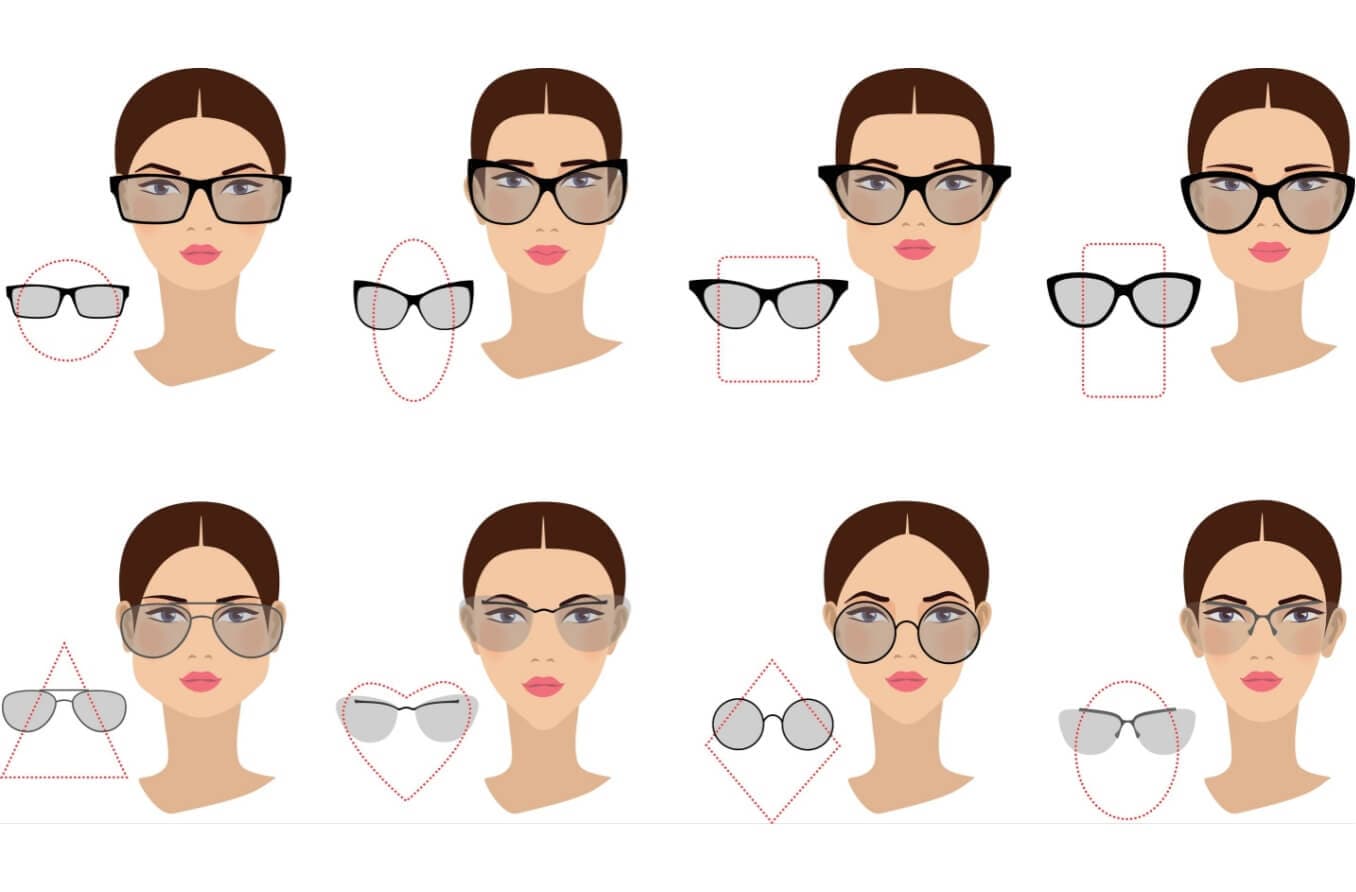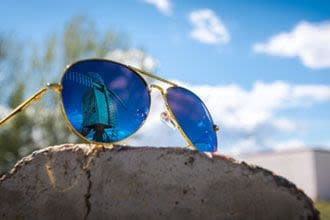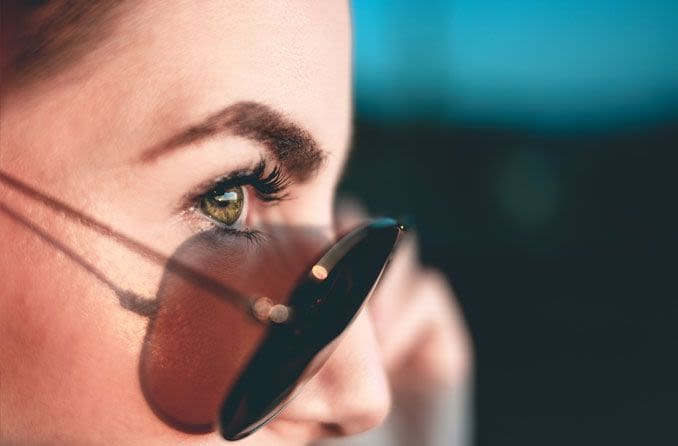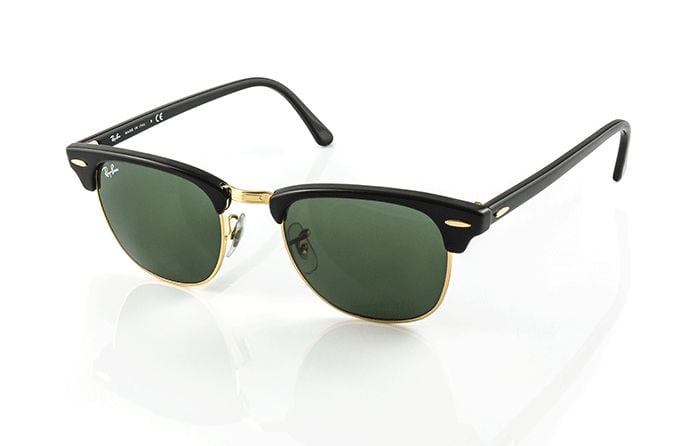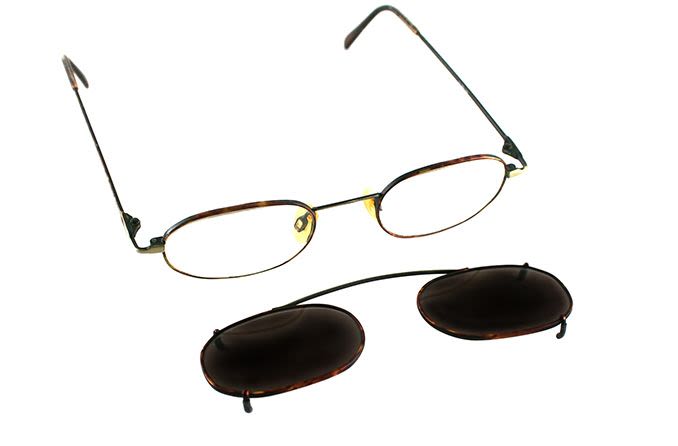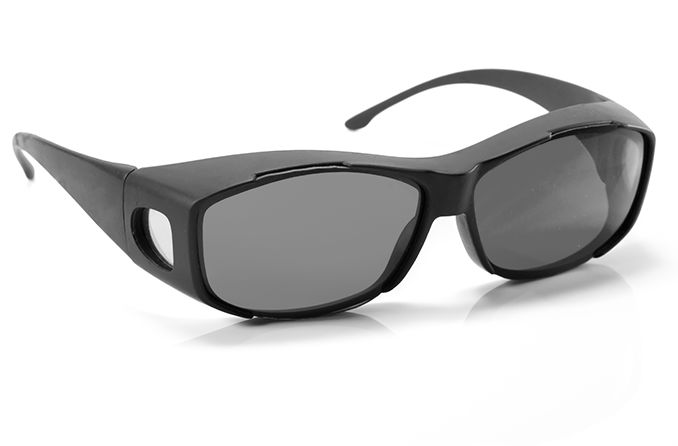History and evolution of sunglasses styles
A bright day calls for your favorite pair of sunglasses. The eye protection and shade they provide are convenient yet crucial, whether you’re running errands, going for a bike ride or just soaking up the sun. While they seem modern and commonplace, sunglasses are a concept centuries in the making.
The sunglasses worn today evolved from various forms of eye protection used throughout history. One such early form can be attributed to the Inuit people of the Arctic region. These early goggles were designed to protect against snow blindness and included very narrow openings in the center of otherwise full-coverage frames. It’s believed that the Inuit also covered the frames in a mix of oil and soot or gunpowder to further reduce glare.
In the 1750s, an English instrument maker and optician named James Ayscough introduced the idea of wearing spectacles fitted with green or blue lenses. Though designed to aid people who struggled with certain vision issues, this invention is considered an ancestor of sunglasses.
Nearly two hundred years later, in 1929, Sam Foster (of Foster Grant) introduced the first pair of shades from what would become known as the “Original American Sunglass Brand” — and the rest is history.
Once sunglasses became mainstream, celebrities, sunglass makers and the general public embraced this trend. Styles of sunglasses have come and gone (and returned again) throughout the many decades they’ve been around.
Popular sunglasses shapes and their names
As sunglasses and their function have evolved, the eyewear fashion trends have too. Here are a few popular sunglasses shapes to consider when you’re choosing your next pair:
Aviators
Aviator-style sunglasses were originally made for military pilots. The initial design was produced in the 1930s and included thin frames and convex lenses that allowed for the frames to be worn under helmets and other headgear. The curve of the lenses also provided full coverage around the eyes to block out as much light as possible during flights.
Since they were introduced almost 100 years ago, aviators have become part of mainstream fashion around the world. Though not every model produced serves the purpose as originally intended, the style has remained the same — iconic curved lenses with a double bridge.
Wayfarers
Wayfarers are one of the most classic styles of sunglasses — and have been since they were invented in the 1950s by a designer who worked for Ray-Ban. The rectangular frames feature sharp corners with two signature rivets (one in each corner) that connect the hinges to the front of the glasses. The bottoms of the frames are slightly rounded, completing the sophisticated silhouette.
Made popular by James Dean in the movie “Rebel Without a Cause,” Ray-Ban Wayfarers remain an iconic fashion statement for celebrities, rockstars and many others around the globe.
Browline
Similar to Wayfarers, browline sunglasses provide the wearer with a classic yet edgy look. The top of the frames is thicker and bolder near the brows (hence the name “browline”), while the bottom is thinner or rimless.
Cat-eye
Cat-eye sunglasses are another style with a retro feel. The wide-set, pointed corners draw attention upwards. And the more narrow bottom portion of the frame sits delicately near the wearer’s cheekbones. This sunglasses style, which has an undeniable old Hollywood feel, can be quite daring or very elegant. It just depends on the look you’re going for.
Round
Round sunglasses were made popular years ago by celebrities such as Beatles frontman John Lennon. But to this day, many people still refer to the style as “Lennon glasses.” Whether you have a connection to Lennon’s music or an appreciation for the retro style, round sunglasses are an excellent choice.
This style is also quite versatile. Small round frames can emphasize a vintage vibe, while oversized round frames can be a chic addition to any outfit.
Square
Square sunglasses are often recognized for their oversized lenses and sharp frame angles. But there are numerous options to choose from, including many with softer curves and smaller lenses. Either way, a pair of square shades is a great choice, whether you’re going for a high-fashion feel or a bold-yet-casual vibe.
Rectangle
Rectangular sunglasses are easy to style, whether you’re seeking a sporty, casual or even formal look. They are longer in width than square glasses, which makes them a bit more subtle if you don’t want to draw too much attention to your appearance. You can make rectangle sunglasses bolder by choosing a pair with pronounced corners, a unique pattern or various lens colors.
Alternative shapes
If you’re looking for something a little more adventurous than your traditional sunglasses shapes, you might consider an alternative style. This includes heart-shaped, geometric, shield, oversized and extra-small frames, among many others. These options can capture quite a bit of attention, especially if you choose a particularly interesting shape for your shades.
Clip-on
If you love your regular eyeglasses or prefer not to wear contact lenses, clip-on sunglasses are a great option. Clip-ons are designed to fit over and clip onto your everyday eyeglass frames, eliminating the need to switch between your eyeglasses and prescription sunglasses. They also solve the problem of trying to fit a pair of regular sunglasses over your eyeglasses.
However, there are limitations for certain prescriptions. For instance, if you have a high plus prescription, a sunglass clip won’t fit properly. Make sure to get a professional’s help when selecting this option.
SEE ALSO: Finding the right eyeglasses to suit your personality and lifestyle
Choosing the right sunglasses for your face shape
Different styles of sunglasses flatter various face shapes. Once you determine your face shape, you can decide what sunglasses shape might suit you best. Here are common face shapes and their ideal sunglasses styles:
Oval faces
Oval-shaped faces are flattered by nearly every style of sunglasses. The smooth curves and angles of an oval face make it easy to dress up, whether you prefer a bold style or a classic silhouette. But if you have smaller features, you may want to avoid oversized shades so you don’t overwhelm your facial characteristics.
Round faces
Complementing a round face is easy to do with the right sunglasses shape. Round faces have nearly equal dimensions in length and width, so steer clear of round frames if you don’t want to accentuate this roundness. Instead, try a pair that extends past the widest part of your cheekbones to break up the curves of your face. Square, rectangular and Wayfarer-style frames are all good options for round faces.
Square faces
Softening the edges of a square face is key when finding the perfect pair of sunglasses. A pair of round, oval or aviator sunglasses is ideal for someone with a square face because they add balance among angular features. Be sure to get a pair that is the width of your face or larger for the most flattering look. Sunglasses that are too narrow for your face can be unfavorable to your natural dimensions.
Heart-shaped faces
Those with heart-shaped faces often have a broad forehead, wide cheekbones and a narrow jawline. This combination of facial features is best accentuated by rimless sunglasses and rectangular or cat-eye frames. Smaller is better for heart-shaped faces, as oversized frames can be overwhelming on your unique angles and curves.
No matter what shape you choose, remember to smile when trying on frames to ensure they don’t touch your cheeks, as this can cause irritation after several hours of wear.
SEE RELATED: The best glasses for your face shape and skin tone
Benefits of wearing sunglasses: More than just style
The benefits of wearing sunglasses go well beyond style. And as sunglasses trends have grown, so have the technological advancements found in sunglass lenses. When you don your favorite shades to embark on a sunny day, you can showcase your style and take advantage of the eye protection they offer.
Sunglasses act as a physical barrier to help protect your eyes from debris and wind irritation along with other elements. They can also offer a range of special features, including:
- UV protection – Make sure your lenses offer 100% protection from the sun’s ultraviolet (UV) rays. This helps reduce your risk of serious eye conditions that may develop from UV exposure over time.
- Polarization – Polarized lenses filter light bouncing off of reflective surfaces. This can decrease glare, increase your visual comfort in bright conditions and help reduce eye strain.
- Gradient lenses – These lenses gradually fade from a darker to a lighter shade. This helps reduce glare from overhead while allowing you to see more easily through the lower part of the lens.
- Photochromic lenses – Photochromic (or transition) lenses automatically darken when exposed to sunlight and become clear again upon going indoors or in low-light conditions.
- Impact-resistant lenses – Impact-resistant lenses are made of materials such as polycarbonate (a type of plastic). Since they are less likely to break upon impact, these may be ideal if you live an active lifestyle.
- Mirror-coated lenses – These lenses have a metallic mirror coating that reflects light, reducing the amount that reaches your eyes.
- Prescription lenses – In many cases, sunglasses can be fitted with prescription lenses if you need eyewear for vision correction.
Keep in mind that not all sunglasses automatically offer these advantages. If you’re interested in special features such as polarization or photochromic lenses but aren’t sure where to begin, speak with your optometrist or optician before purchasing your next pair of shades.
You have numerous options when it comes to the types of sunglasses to invest in. But at the end of the day, the decision is yours to make, whether you choose a retro style with gradient lenses or classic frames with colored lenses.
READ NEXT: 10 stylish trends in men's glasses
